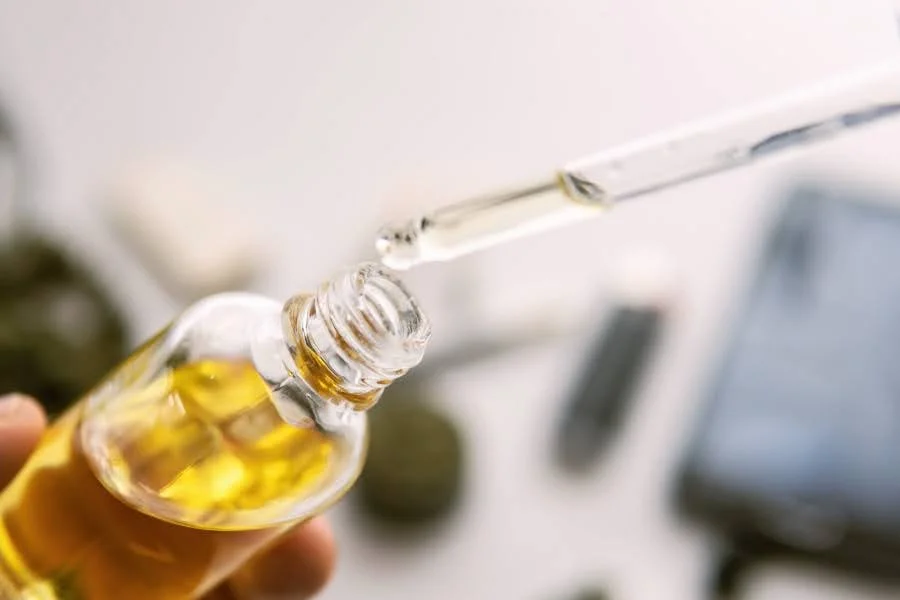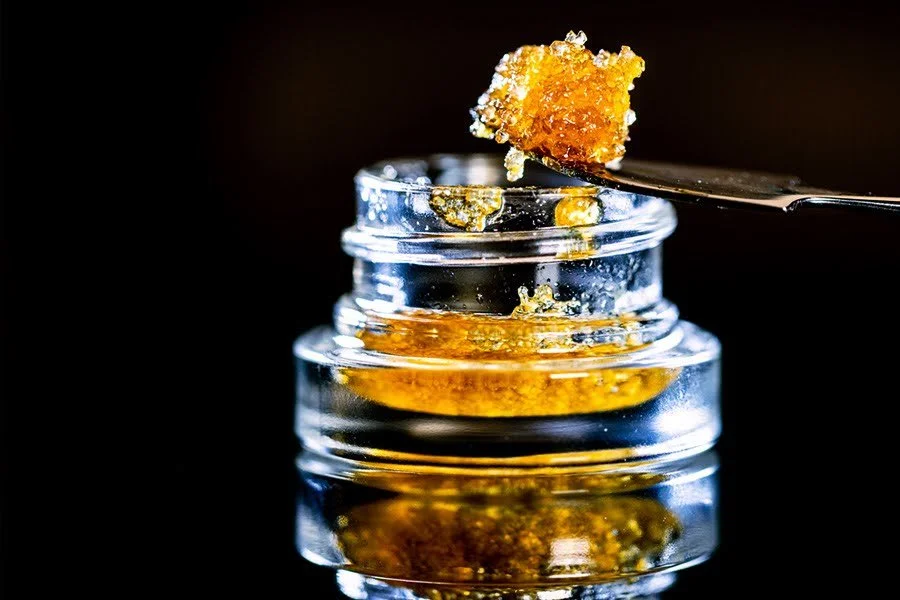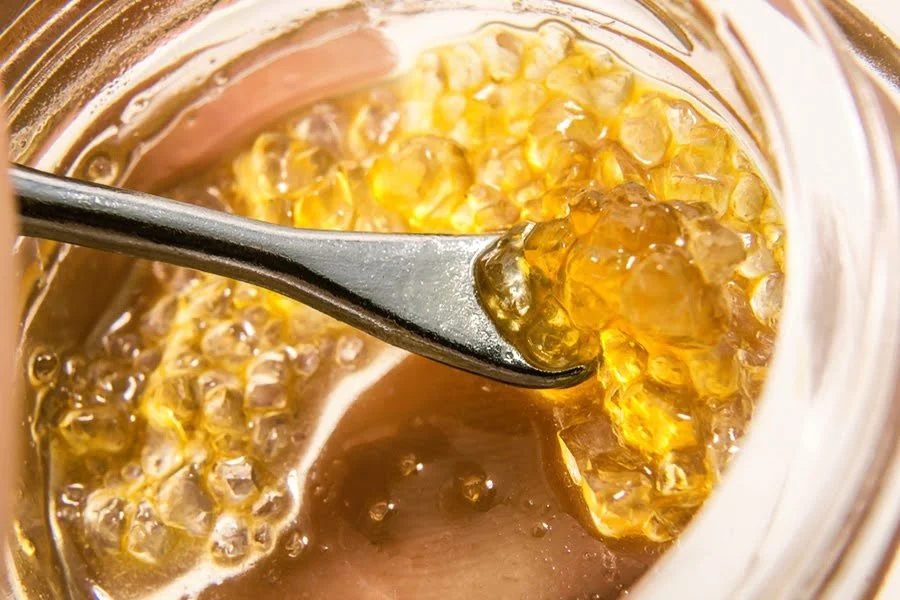Distillate vs Rosin
There are many different ways to extract THC or CBD from the cannabis plant for stronger highs. However, the method you opt for will determine the quality of the cannabis product and its effect on your body and mind. Distillate vs rosin are two products obtained through solvent-based and solventless extraction, respectively.
In the following text, we’ll take a deep dive into these two types of extraction and explain their differences. We’ll also go over the composition of rosin and distillate and help you choose the right cannabis product for your needs.
Source: shutterstock.com / Photo Contributor: Dmytro Tyshchenko
Understanding Distillate
Distillate is a highly concentrated form of cannabis, cleansed from any unwanted compounds otherwise present in the cannabis plant. Through the process of distillation, cannabis resin is turned into a thick, golden wax you can use recreationally through different consumption methods:
By rolling it into a joint
By taking it sublingually
By dabbing it
By adding it to edibles
By applying it as a topical
There are multiple ways to distillate cannabis, but the two main ones are fractional distillation and purification. Fractional distillation is a specialized technique for cannabinoid isolation; however, it can be used to isolate any preferred compound found in the cannabis plant. Each compound in the plant is isolated at preset boiling points.
Purification is similar to fractional distillation, the main difference being that this technique eliminates substance impurities. It aims to enhance the overall quality and purity of the final product and can be done using many different methods – filtration, winterization, chromatography, etc.
Depending on the methods used, distillates may reach from 90% to 95%, which is the maximum purification level. However, there’s no such thing as a 100% pure extract due to the plant’s complex composition with over 500 compounds.
Understanding Rosin
Rosin is a solventless cannabis concentrate produced by applying heat and pressure to the cannabis flower. It’s preferred by those looking for an all-natural cannabis product without the use of chemicals in the purification process.
The rosin extraction process involves two plates used to press the plant tightly, releasing the cannabinoids and terpenes. The result is a sticky, resinous substance, which is then stored in a cool place to adjust its consistency.
Unlike a distillate, you can extract rosin at home, since it doesn’t require specialized equipment, solvent, or complex chemical processes.
Source: shutterstock.com / Photo Contributor: 420MediaCo
Differences Between Distillate vs Rosin
Let’s look at the top differences between distillate vs rosin carts:
Purity
Distillate undoubtedly has a higher purity level thanks to the complex chemical processes involved in its creation. The use of solvents and specialized equipment means better, more precise extraction of individual compounds. On the other hand, even though rosin offers less purity, it is easier to produce.
Consistency
This is where the rosin shines since its consistency can be tailored to your unique taste. It can range from a thicker, more viscous substance to a creamy syrup-like consistency. On the other hand, distillate is known for its thick appearance, resembling honey.
Purification methods
We mentioned that one way to create rosin is by using hot plates. However, you can use any heat source you have at home that can flatten an object, like an iron or hair straightener. Other than that, you only need parchment paper to protect the plant from burning. However, you’ll need a distillation unit and a heat source at a precise temperature for distillation, depending on the final product you want.
Extraction Methods
Let’s look at the differences in extraction methods for creating distillate vs rosin. Distillate requires a solvent such as ethanol or CO2, whereas rosin only uses heat and pressure.
Solvents are necessary for the effective extraction of the high-inducing cannabinoids in the plant. However, they can result in a loss of certain cannabinoids that make weed taste and smell better. Solventless extractions used in the creation of rosin retain more of the original structure of the plant.
Composition and potency
The composition and potency of rosin and distillate differ according to the extraction methods. The primary component of distillate is pure THC or CBD, whereas rosin has a broader spectrum of cannabinoids. Distillate may contain over 90% of THC as opposed to rosin with 60% to 80%.
The isolation of individual high-inducing compounds in distillate may cause it to be more potent. However, it will lack all of the goodness that comes with the taste and smell of cannabis.
Terpene retention and flavor profiles
The aromatic properties of distillate vs rosin depend on the extraction method, temperature control, and preserved compounds.
Generally, distillation is used to acquire a near-pure THC liquid without a taste or smell. On the other hand, rosin can have a rather potent flavor profile since the extraction method involves squeezing out the terpenes and turning them into liquid. The lower the temp, the better the flavor concentration.
Consistency and appearance
Rosin and distillate may look similar at first glance but have vastly different textures. When purchasing rosin, the range of colors might intimidate you at first. It can go from nearly entirely clear to a deep amber.
The color of the rosin points to some of its attributes. For example, if it’s clearer, it may mean it's purer or was pressed at lower temps. If it’s darker, it might be an older product or have been pressed with more pressure at higher temps.
The appearance of rosin doesn’t significantly impact consumption methods. However, you should consider its potency, consistency, and texture when choosing whether to dab, vape, or eat it. For example, the more solid the structure, the smoother the vapor. With a creamy, buttery texture, you can consume it any way you like – as a topical, rolled in a joint, or baked with some cookies.
Distillate is generally consistent in appearance and texture – clear and viscous. The most popular way to consume distillate is in the form of vaping due to its liquid state. It’s also great in edibles because it's highly concentrated and doesn’t add too much flavor to the recipe (depending on the isolated compounds).
Source: shutterstock.com / Photo Contributor: Brandon Crawford
Conclusion
Distillate vs rosin differ in appearance, composition, and taste due to the extraction methods. Distillate is a clear, thick liquid with no taste or smell (unless you choose to preserve those cannabinoids). Rosin can be off-white or deep yellow and thicker or more liquidy.
To create distillate, you’ll need specific equipment and a solvent. For rosin, you only need a heat source and something to apply pressure on the flower.
When choosing between the two, consider your preference for taste, smell, and potency. Rosin packs more punch and gives that strong weed smell, whereas distillate is more potent but cannot necessarily be noticed.



